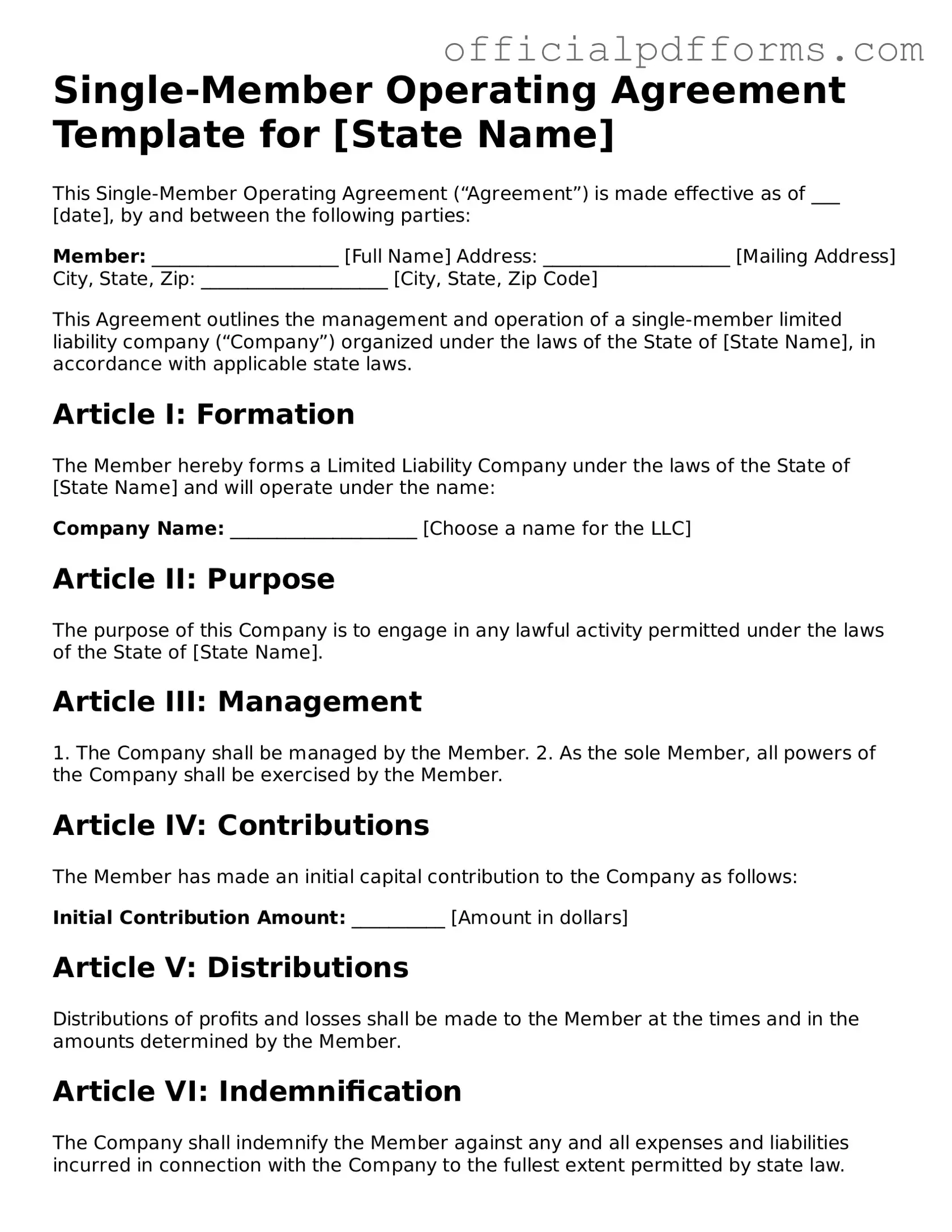What is a Single-Member Operating Agreement?
A Single-Member Operating Agreement is a legal document that outlines the ownership and operational procedures of a single-member limited liability company (LLC). This agreement serves as an internal guide, detailing how the business will be managed and how decisions will be made. It is particularly important for maintaining the limited liability status of the LLC.
Why do I need a Single-Member Operating Agreement?
Having a Single-Member Operating Agreement is essential for several reasons:
-
It establishes the legitimacy of your LLC, helping to protect your personal assets from business liabilities.
-
The agreement clarifies the management structure and operational procedures, reducing potential conflicts in the future.
-
It can be beneficial for opening business bank accounts and securing financing.
What should be included in a Single-Member Operating Agreement?
A comprehensive Single-Member Operating Agreement should include the following key elements:
-
The name of the LLC and its principal address.
-
The purpose of the business.
-
The name of the single member and their ownership percentage, which is typically 100%.
-
Management structure and decision-making processes.
-
Procedures for adding new members, if applicable.
-
Distribution of profits and losses.
-
Amendment procedures for the agreement.
Is a Single-Member Operating Agreement legally required?
While many states do not legally require a Single-Member Operating Agreement, it is highly recommended. Having this document can help establish the separation between personal and business assets, which is crucial for maintaining limited liability protection. Additionally, some banks and lenders may require it to open business accounts or secure loans.
Can I create my own Single-Member Operating Agreement?
Yes, you can create your own Single-Member Operating Agreement. Many templates are available online, which can serve as a helpful starting point. However, it’s important to ensure that the agreement complies with your state’s laws and accurately reflects your business needs. Consulting with a legal professional may provide additional peace of mind.
How do I modify my Single-Member Operating Agreement?
To modify your Single-Member Operating Agreement, you should follow these steps:
-
Review the existing agreement to determine the specific sections that need changes.
-
Draft the amendments clearly, specifying what changes are being made.
-
Sign and date the amended agreement to indicate your approval.
-
Keep a copy of the amended agreement with your business records.
What happens if I don’t have a Single-Member Operating Agreement?
If you do not have a Single-Member Operating Agreement, you may face several risks. Without this document, it may be harder to prove that your LLC is a separate entity, which could expose your personal assets to business liabilities. Additionally, disputes may arise regarding the management and operations of your business without clear guidelines in place.
